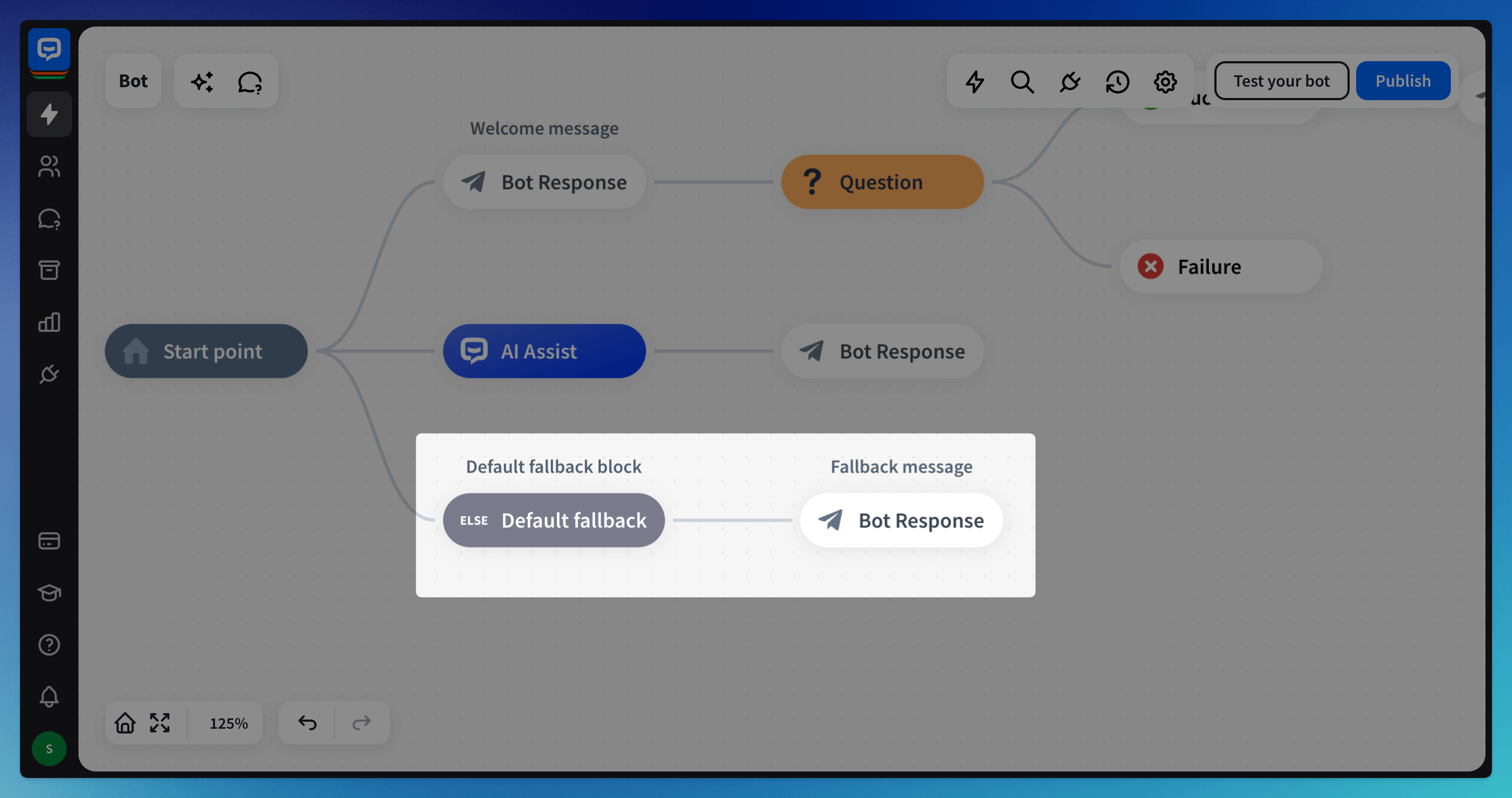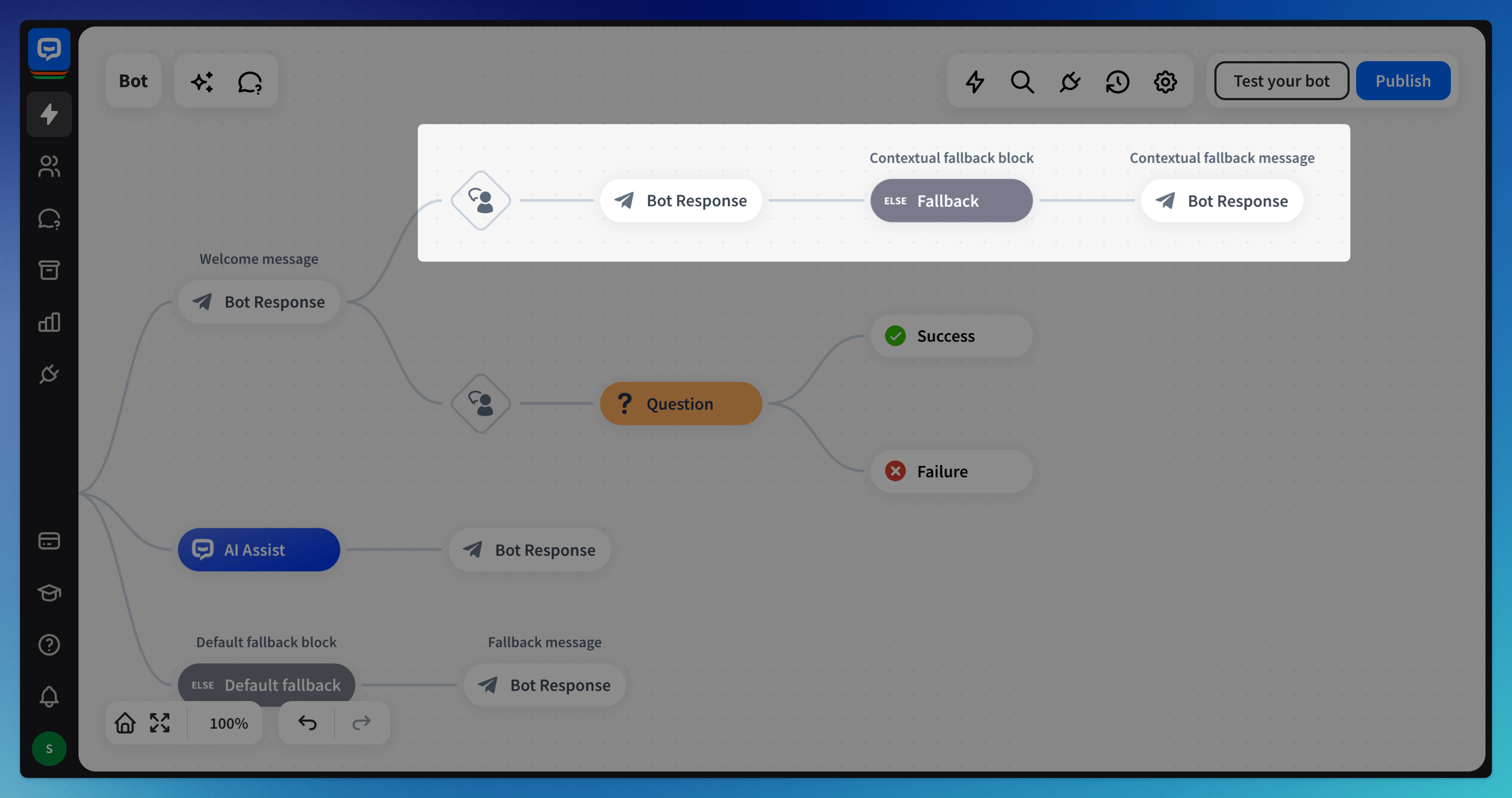The fallback interaction is triggered when your chatbot doesn’t recognize the user’s message. You can use it to ask the user to reword their question, show answers they can choose from, or transfer them to a human agent when integrated with LiveChat. Fallback can help your chatbot sustain a conversation when a misunderstanding happens.
We can distinguish two types of fallback: default and contextual.
Default fallback
Default fallback lets you display a general bot’s message or trigger an action anytime your chatbot can’t match the user query with any chatbot response. By default, a Default fallback interaction is added to every chatbot. It consists of a Default Fallback block and a Bot response.
In ChatBot, the Default fallback block functions as a trigger point that can’t be edited. You can edit the default fallback interaction added the way you want by clicking the bot response Fallback message or adding more actions and interactions.

Contextual fallback
You can add contextual fallback for each chatbot flow path when the Default fallback interaction is insufficient. This block lets you display a dedicated bot’s message or action, delivering a more personalized chatbot experience.
Contextual fallback is triggered only for a single path that includes User input. Paths that don’t have a contextual fallback interaction will be directed to the default fallback interaction.
 To set the fallback, drag the Fallback block from the actions and interaction menu and drop it in a chosen place in your chatbot. Add a Bot response block after the added Fallback block and provide the message.
To set the fallback, drag the Fallback block from the actions and interaction menu and drop it in a chosen place in your chatbot. Add a Bot response block after the added Fallback block and provide the message.
Read more: